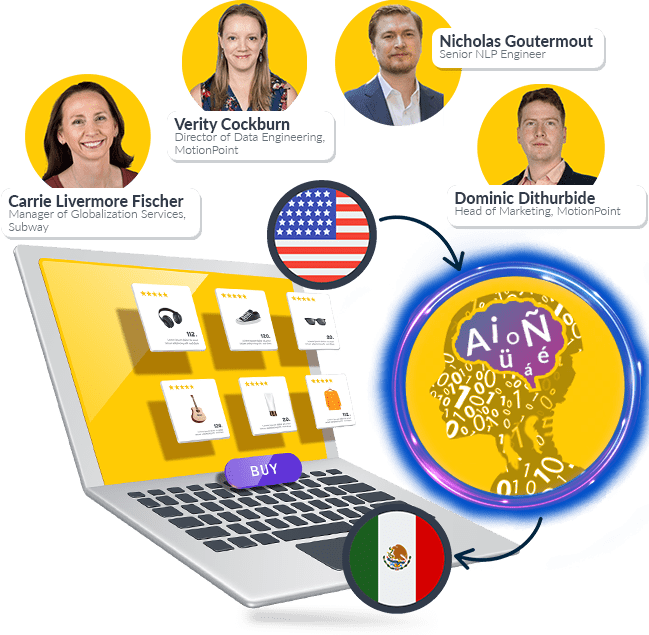Traditional translation approaches aren’t built for tackling the unique complexities of website translation.
Web localisation is a different beast. There are technical nuances that make it challenging for even the smartest vendors, and downright impossible for legacy translation agencies to get right.
Let’s take a closer look.
Dynamic Generation
Website content rarely, if ever, exists just as simple text on its own. It often comes packaged with code-HTML, JavaScript, JSON, and others. Legacy translation solutions weren't designed for complex website structures, and can't often distinguish the content from the coding.
Website localisation is challenging for even the smartest vendors. Dynamic content makes it even harder.
For these vendors, the code must be manually separated from the content, and then reintegrated after translation. This slow and cumbersome process can work for static websites, but not for dynamic websites that generate customised user experiences on the fly.
The ideal solution for dynamically generated websites, as well as any other, would be a technology that works around the code and assembles translated webpages in real-time.
Multiple Platforms and Contributors
Another feature of websites that make them unique—and therefore difficult for traditional translation methods—is that they comprised of content pulled from CMSs, PIMs, and other locations … often simultaneously.
Recreating this complex ecosystem manually, through old-school translation methods, is a logistical nightmare. It demands coordination with translation workflows across many platforms and contributors.
The best way to handle this level of multifaceted complexity is with a technology-agnostic solution that operates independently—and seamlessly—in the background to detect and translate all content, no matter where it resides.
Old-school approaches can't handle multiple platforms. It takes elegant, efficient coordination.
The Speed of the Internet
The lightning-fast pace of the Internet usually leaves legacy translation approaches in the dust. Brochures, manuals, and other offline documents can remain unchanged for years, but websites never stay the same for long. They're constantly updated-sometimes daily-to stay engaging and relevant, and to keep users coming back to see what's new.
For some businesses, this content can even change several times a day. Having your translated site keep pace with this brutal production schedule is critical. You must provide your valued global customers with digital experiences that are on par with your flagship website.
These days, it's unacceptable for any website translation to take more than a working day or so to be created, edited and published on-site. Traditional agencies can't keep up with that, but modern solutions can.
User Demands
International customers have high expectations for their user experiences. They expect fresh content, interactivity and social shareability. They demand high-quality, engaging customer experiences, and they expect it in their preferred languages. Translation done the old-fashioned way just won't cut it anymore.
Your global customers expect fresh content, online interactivity and social shareability.
It's rare for legacy solutions to efficiently localize images, videos and web applications. They also regularly struggled to preserve the look, feel and function of your flagship website, or let you easily repurpose translated content for omnichannel use.
World-class websites can only be translated with world-class translation solutions.
The Good News
Websites are digital experiences. That's bad news for traditional translation agencies, but great news for you. Why? With the right localisation solution, website translation is a breeze. There's no need to manually extract, re-write and re-upload your content-or worry about the operational complexity involved in the translation, deployment or maintenance of your multilingual website.
Digital-first solutions can easily identify the translatable elements of your website, no matter what.
Unlike traditional agencies, digital-first solutions can easily separate the translatable elements of your website, no matter what programming language or platform they live in, submit them for fast translation, and reassemble them seamlessly on a localised website.
These turn-key solutions run quietly in the background so you and your team don’t have to babysit an agency, manage translation workflows and technical operations, or juggle other tasks that go beyond your job description.
Let a digital-first solution handle the unique challenges of website translation so you can focus on growing your business for global success.
Last updated on April 16, 2018


